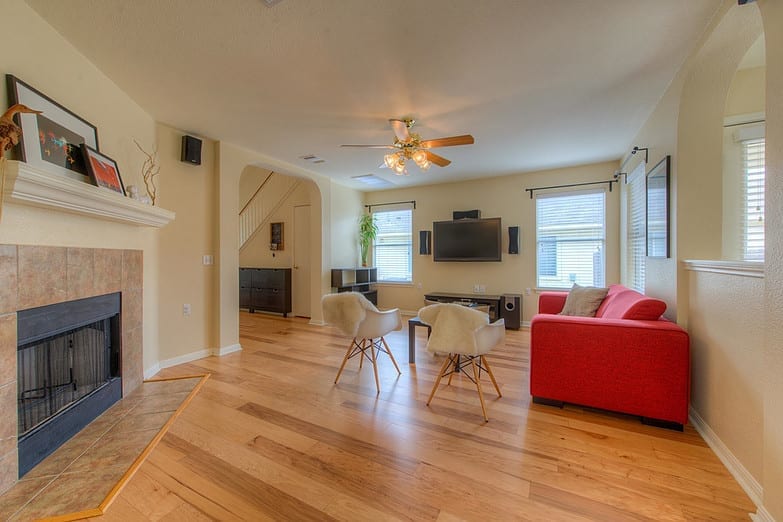Skip Ahead to Topic
Medically-Assisted Treatment for Sober Living?
“I can’t help a dead person,” says Second Chances Recovery Homes (SCRH) founder Jeff Lewis, when asked about why his sober living home accepts individuals taking medications not permitted in other recovery homes. “Ultimately, if I have to choose between treating someone with Suboxone or seeing that person continue to use heroin, I choose Suboxone.”
Suboxone is the brand name for a drug gaining attention in the recovery community for its effectiveness in treating opioid addictions. Its main ingredient, buprenorphine, is one of three medications approved by the FDA as part of a medication-assisted treatment approach for substance abuse known as MAT.
What, exactly, is MAT? What part does it have to play in the journey to wholeness for a recovering addict? And what place does it have in sober living homes like Second Chances that are devoted to whole-person, no holds barred treatment?

The What and Why of Medically Assisted Treatment
Medication-assisted treatment (MAT) is defined by the Substance Abuse and Mental Health Services Administration as the use of medications in tandem with counseling and behavioral therapies to sustain long-term recovery for individuals struggling with substance abuse disorders. MAT is considered one component in a holistic or “whole-person” approach to addiction healing. Though used primarily to treat opioid addictions to substances such as heroin and some prescription painkillers, MAT may also be used to address alcohol dependence.
There are currently three drugs cleared by the Federal Drug Administration for use in a MAT opioid treatment plan: buprenorphine, methadone and naltrexone. The two most popular, buprenorphine and methadone, are known as “opioid agonists”. They work by attaching themselves to the same brain receptors that were activated by the drug an addict misused, essentially tricking the brain into thinking it’s still getting that illicit drug. While in the same class of drugs as those abused, these prescription low-dose opioids are safer and more controlled than their counterparts. Their use allows an individual to begin and continue on in the recovery process by easing excruciating withdrawal symptoms and psychological cravings that make it so hard to stay clean long-term.
Numerous studies support the effectiveness of these treatments in reducing the risk of relapse or overdose for addicts. According to the Surgeon General’s 2016 report, Facing Addiction in America, MAT therapy featuring opioid agonists has been repeatedly shown to reduce illicit drug use and deaths from overdose and improve the likelihood that individuals will remain in treatment. Less potential for relapse translates into lower rates of HIV and hepatitis C infections as well. Treatment with opioid agonists in conjunction with behavioral therapies and psychosocial support “leads to better treatment outcomes compared to behavioral treatments alone,” states the report. Success rates with long-term medication-assisted opioid treatment have as high as 60% in some studies. Given the national crisis that opioid misuse has become, with over 130 people dead from overdoses every day and more than 75% of individuals with an opioid use disorder unable to remain sober for even a year, MAT is a therapeutic tool the addiction treatment industry and those it serves cannot afford to ignore.

Suboxone and Sustained Sober Living
For individuals transitioning out from an inpatient facility back into the “real world” or those simply seeking a supportive alternative to formal treatment, sober living homes can provide a structure, support and accountability that mean the difference between relapse and sustained sobriety. Stable, drug-free housing and a supportive community is what makes sober living homes a life-saving bridge for those who might otherwise be too powerfully tempted to fall back in with old acquaintances, to fall victim to old stresses, and, ultimately, to fall prey again to full-blown addiction.
For all they have to offer, however, most sober living homes will not or cannot provide medication-assisted treatment to their residents. They are not alone. The latest research indicates that MAT for opioid addiction is vastly underused in all treatment contexts, leaving millions of Americans more helpless than they need to be in the face of this devastating disorder.
Does Suboxone help with opioid recovery?
One 2018 study published in the Annals for Internal Medicine found that of 18,000 adults treated in Massachusetts emergency rooms for non-fatal opioid overdoses between 2012 and 2014, only about 30% received FDA-approved medication-assisted treatment. Those who were treated with methadone or buprenorphine were found one year later to have reduced their risk of death by 40% and 60%, respectively. Tragically, 5% of those not treated with these deaths had passed away within 12 months of that ER visit, at least 2% from confirmed drug overdoses. Further, data from the U.S. Substance Abuse and Mental Health Services Administration revealed that, as of 2016, only 41% of the over 12,000 treatment facilities in the U.S. offered one form MAT. Just 3% offered all three.
If access to FDA-approved medications greatly improves a person’s chances of successfully recovering from a substance-abuse disorder, why isn’t this access more readily available in treatment facilities, including sober living homes?
The reasons are many: restrictive drug and healthcare policies, inadequate training for healthcare professionals in addiction treatment, lack of access to these drugs in certain parts of the country, stigmas related to substance abuse treatments, and more. Perhaps most relevant where sober living homes is concerned is that many homes require full sobriety, an idea prohibits use of low-dose opioids as part of an individual’s treatment plan.
What are the benefits of Suboxone?
Such abstinence-only rules often stem from the misunderstanding that MAT is basically substituting one drug for another. While opioid agonists do perpetuate a degree of physical dependence, they have been shown to have no harmful effects on an individual’s intelligence, mental or physical functioning, or employability, unlike the drugs they help addicts detox from.
The assistance these medications provide in breaking the psychological dependency that drives the addiction cycle and restoring the addict to a functioning member of society makes them a worthy means to an end.
On top of MAT’s stigma among recovery homes, many of these homes are also not equipped to acquire and dispense such carefully-regulated medications, or to monitor their effects. As a result, less than half of recovery homes nationally allow maintenance prescriptions for methadone, buprenorphine, or naltrexone and so block those in their care from a treatment option that could mean the difference between recovery and relapse, life and death.
Medically Assisted Treatment in Austin Texas
At Second Chances Recovery Homes, treating the whole person is paramount. Treatment plans are comprehensive and individualized. They are built upon what works and saves lives. Period. This means that any safe and proven treatment options are potentially on the table, from a Twelve Step program to professional counseling and mentorship to – you guessed it — medication-assisted therapy.
Unlike many other sober living homes, SCRH is able to provide MAT to its residents because it is equipped to handle the medical side of long-term recovery. Second Chances works with a team of experienced medical professionals who can prescribe and help monitor advantageous medications like Suboxone, thus ensuring that every measure that can be taken to ensure successful recovery from an opioid or alcohol addiction is implemented. These same medical professionals may prescribe and monitor a number of medications to treat mental and physical symptoms of various kinds, including those used to treat alcoholism and depression.
How often do you use Suboxone?
All medications with the potential for abuse are stored securely, regularly accounted for, and carefully distributed. Multiple weekly drug tests help SCRH staff to ensure that medications are being used appropriately.
The goal for all residents of SCRH is improvement of quality of life while in the recovery process, so that they can not only continue living, but do so more fully. Medication-assisted treatments can play a critical role in building a bridge from the world of drug abuse to real, restored life.
How does suboxone help recovering heroin addicts?
“For the heroin or prescription pill addict, medications like Suboxone can help buy us time,” says SCRH founder Jeff Lewis. “People struggling with addiction need to stay sober long enough to get a taste for what clean living could look like for them. MAT can make it or break it for the addict who may not be able to stop using – or isn’t sure he wants to. When it comes down to it, sometimes we have to help people choose life. That’s what Second Chances is all about.”


Recent Comments